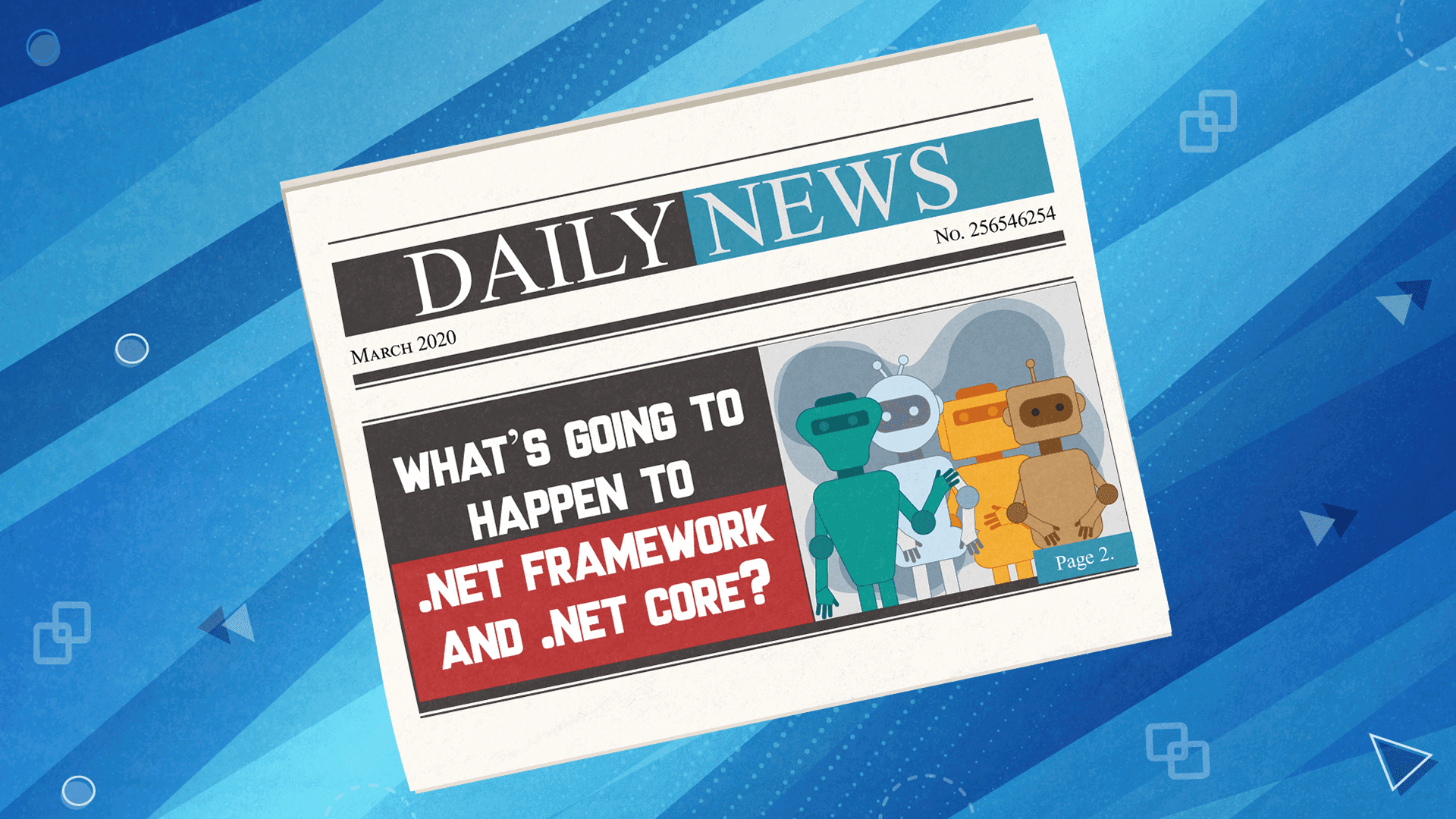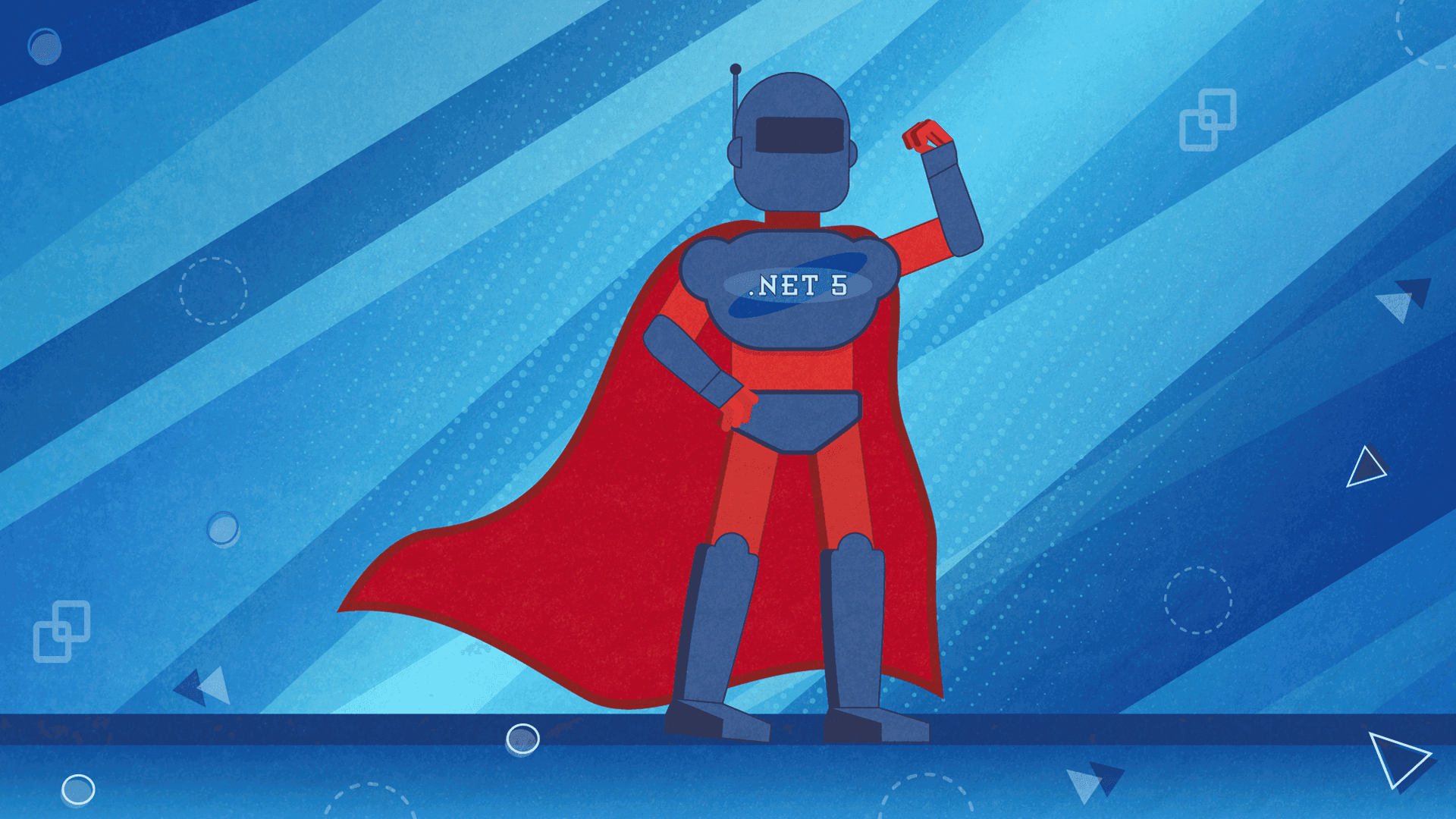The Future of .NET: 3 Things You Should Know About .NET 5

It’s been almost a year since Microsoft announced the new .NET solution at the Build Conference in Seattle. .NET 5 is envisioned as a platform that is supposed to unify all the existing .NET platforms (.NET Core, .NET framework and Xamarin) into one a single, super-powerful .NET toolchain.
Microsoft is basically taking the best of each existing .NET platform and transferring it into one place where devs can get support for all that .NET has to offer. This means that you’ll have a single point of access to tools for building both mobile, desktop, and web-based solutions. It was promised that .NET 5 will provide devs with the ability to interop with Java and Swift, which is great for those who want to interact with native mobile application libraries.
If you’re a .NET developer, this is huge news for you! If you’re currently supporting enterprise-level applications created in .NET framework, you’re probably open to learning as much as you possibly can about this new platform and how it is going to affect your work in the near future.
.NET 5 is set to debut in November, and we at Share IT are impatiently awaiting its arrival. Since .NET 5 will bring a lot of change to the industry, we have decided to remind you in this blog post what the new Microsoft’s tech has in store for us and what we need to know about it upfront to successfully adapt to the new terrain once the new toolchain finally gets launched for commercial use.
What’s Going to Happen to .NET framework and .Net Core When .NET 5 Gets Released?

Probably the biggest and most important question. According to Microsoft, they plan to continue supporting .NET Framework, at least for now. However, the company has also said publicly that 4.8 will be the last major version of it we can expect to see.
As far as .NET Core is concerned, the updates stop at 3.1. Yes, .NET 5 is basically going to be an improved version of what .NET Core 4 was supposed to be.
However, all the things that devs like about .NET Core will continue to exist. This includes:
- Open source and community-oriented on GitHub
- Cross-platform implementation
- High performance
- Side-by-side installation
- Small project files (SDK-style)
- Visual Studio
- Visual Studio for Mac
- Visual Studio Code integration…
...and more.
What’s Getting the Axe?
Before we get into details and start talking about all the new things that will be coming to .NET 5, let us first cover all the important components that Microsoft is cutting from the platform.
Since most of us prefer to use different tools and environments when it comes to developing applications, it’s best that we first talk about the elements that will no longer be part of the .NET Core.
For a lot of devs out there, this will be a total game-changer so let’s make sure that we cover all the important changes:
Web Forms
ASP .NET Web Forms are officially retiring with .NET 4.8. Microsoft has confirmed that ASP .NET Web Forms won’t be coming to .NET 5 and has recommended that devs switch to Blazor. Sure, there are also other alternatives to pursue like Angular, React, and VueJS.
If you are currently using ASP.NET MVC as a full-stack web app, you can continue to do so. ASP.NET Core MVC or the new Razor Pages are still acceptable solutions for quickly building web form applications without views and controllers.
However, if you are building complex apps for enterprise-level businesses, then it’s highly advisable to forget about ASP.NET Core MVC and consider migrating to Blazor, Angular, or React.
Microsoft has provided an instruction to how to migrate your entire work to Blazor, so there’s nothing standing in your way now if you’re looking to update your stack web app.
WCF
This is a bit of a shocker. Microsoft said that WCF is going to share the fate of Web Forms as far as .NET 5 is concerned. Even though there has been a lot of heated discussions whether to bring the WCF to .NET Core or not, Microsoft has eventually decided to leave in the past because their initial estimation for adapting WCF to .NET Core was 3 years ago.
As a substitute, Microsoft is promoting gRPC. The company feels that this open-source, high-performance framework can run on any RPC environment.
WWF
WWF is also getting cut. If you still rely on WWF to create applications that execute ordered business processes, like hiring candidates for specific positions, Microsoft is advising you to look at gRPC.
What’s New

Now that we have listed all the darlings that are fading into oblivion, it’s time to talk about new things that are coming with .NET 5.
The goal was to develop a unified .NET runtime and framework that can be used anywhere. The company believed that their .NET Framework wasn’t progressing as quickly as their .NET Core. The legacy code was killing it so they decided to do something about it.
Microsoft has put a lot of work into bringing the biggest and most exciting .NET Framework 4.8 APIs and features to .NET 5, along with new APIs and services. The company has invested heavily in bringing its different compilers together, taking both JIT and Mono to another level.
It's important to also mention Winforms, WPF, and UPF. Microsoft is bringing the Windows Desktop Pack to support the creation of applications that work only on Windows. The company underlined that they’re only doing this to help move legacy Winform apps into the new system. .NET Core architecture is not changing, which means that devs will be still able to use cross-platform frameworks.
Over to You
The idea behind .NET 5 was to make .NET development simpler, but also richer in every sense. Microsoft is determined to bring more power and functionalities to their product. All new C# versions will also be part of .NET 5.
This will make every .NET dev’s life a lot easier. The days of learning new languages for specific cases are going to become a thing of the past. Once .NET 5 launches, all you’ll need to know is C# in order to create apps that run anywhere from IoT to Cloud.
However, there will be people who’ll go through a bit of difficulties in this transition. We’re talking about those who still have products/frameworks based on WCF and Web Forms. But, even they have everything at their disposal to make the necessary migration and prepare for the new era of .NET development.